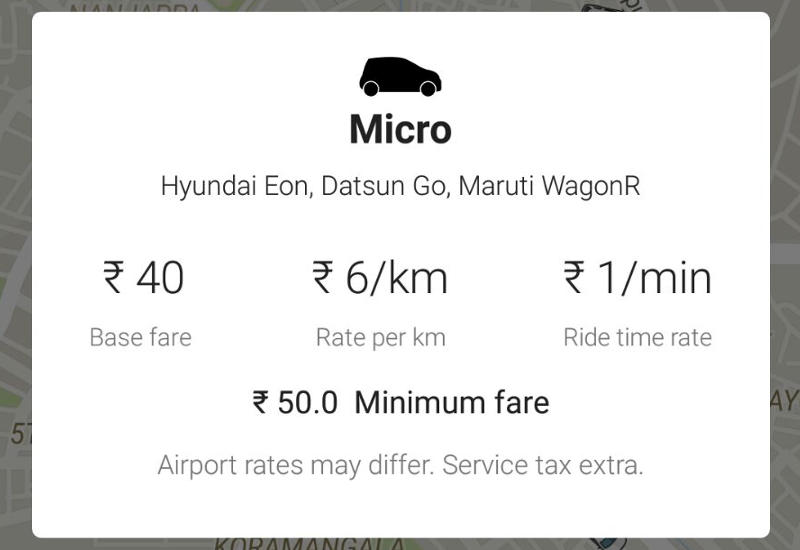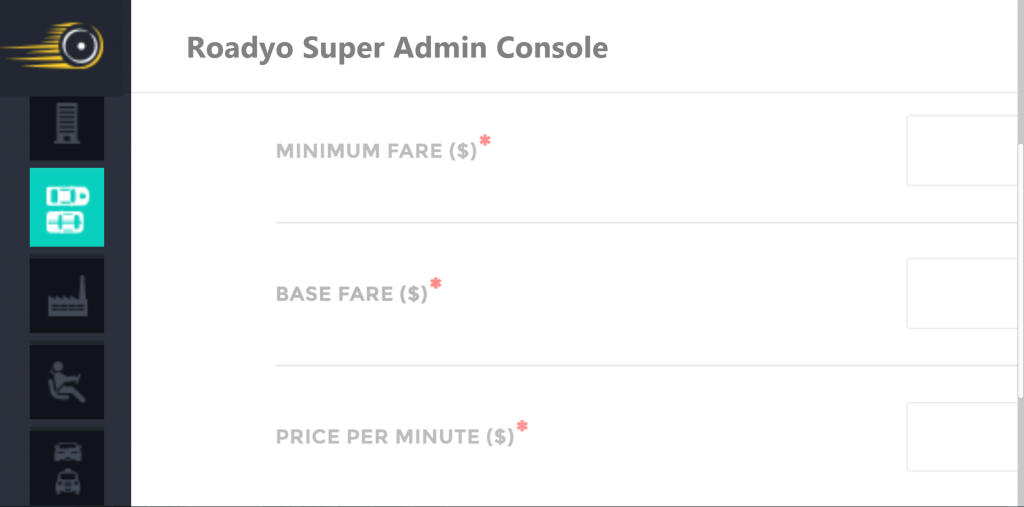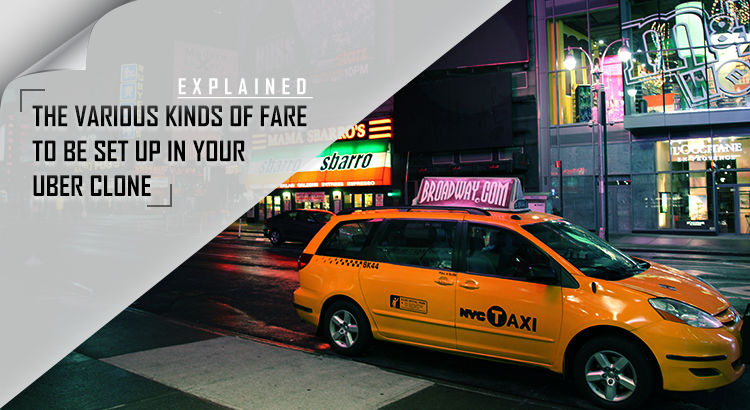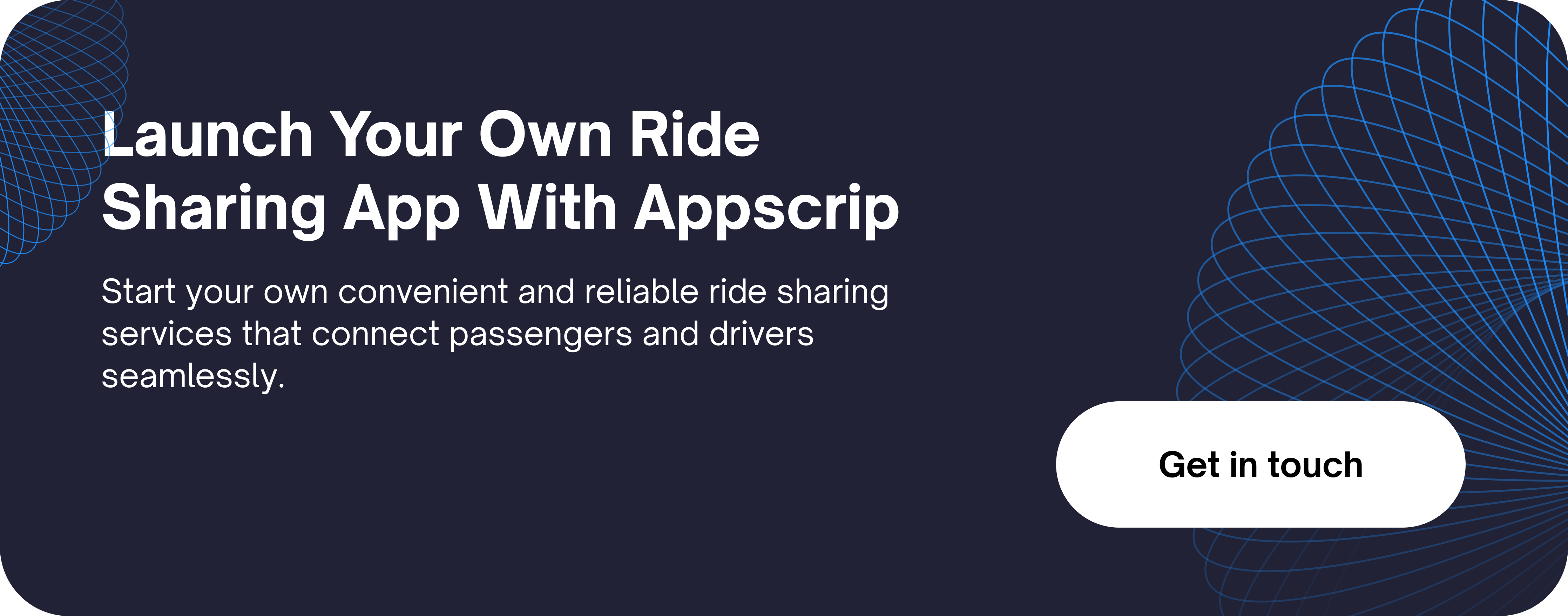Setting up the various fare types is a crucial factor to consider when building your Uber-like application for your on-demand taxi business.
There are generally 6 kinds of fare in any standard taxi booking app
1) Base Fare
This is the fare at which the taximeter will start at.
Example: Consider a situation where a passenger enters the cab, the driver starts the trip but the passenger realized that he/she had forgotten something and decides to complete the trip without actually traveling. How does your driver make money in this situation?
A base fare is set up, so the taxi meter never starts at $0.
2) Minimum Fare
It is the minimum amount to be collected from the trip journey irrespective of the trip length or duration. Usually used during promotional campaigns.
Example: Consider a situation where you offer a promo saying “$50 off your next 10 rides”
However, the minimum maintenance fee/day for a taxi is now being hampered because of this promo.
This is where a minimum fare comes in. Minimum fares are used to ensure the minimum maintenance/service fee is met irrespective of promos & offers.
Simultaneously, it is a way of reimbursing drivers for very short trips.
If you are still confused by this, here’s a relatable scenario
Ever notice the line “Free delivery for orders over $10”
You would normally associate this with food delivery or when ordering online. Now if you try ordering something for just under $10, you would have an additional fee associated to make your total bill close to $10.
You can tell that $10, is the approximate minimum fare that is set.

If the trip price is higher than the minimum fare then the minimum fare is canceled out and the higher price is kept. The base fare is added to the ‘base’ cost of every trip.
3) Cancellation Fare
This is the fee applied when a user cancels a booked ride. This fee can be customized to be applicable after the driver has completed a certain duration or distance towards the customer’s location
4) Trip Time Fare
This is the fee charged when you charge your passengers after a certain time duration has passed.
Example: You know your driver’s trip from Point A to Point B will roughly take 20min and cost $10 but what if there’s a traffic jam or breakdown during the trip that increases the duration from 20min -> 60min?
How do you make up for the fuel lost or the loss of other bookings during the extra delay?
You charge the passenger for the extra trip minutes spent after a set time has passed.
5) Trip Distance Fare/km
Fee applicable after a set distance is completed.
Example: You have an offer “Only $5 for the first 10km”. What happens after 10km? Your Min Fee/km that you have set, comes into place.
6) Waiting Fare
This is the fee associated when the driver has arrived at the pickup point, but the trip doesn’t start immediately upon arrival.
Example:
Your driver arrives at the passenger’s stop, however, the passenger is delayed and takes 30min to get into the cab. Similar to the above scenario, you wouldn’t want your driver to waste fuel or miss out on other trips during the delay.
Click Here
Fare set up in our Uber clone software – RoadYO
Taking our Uber clone RoadYO as an example, Here is how one can set up the various fee types on the app via the admin panel.

We’ve implemented an advanced super admin panel with an easy-to-use UI. You can set up the various fares associated with each vehicle type such as
- Minimum Fare
- Base Fare
- Price Per Minute
- Waiting Charge
- Price Per Mile
and other vehicle-related details under our ‘Vehicle Type’ section.
Must Read | Build An Uber-Like App with these technologies
Click Here










